 advertisements advertisements
|

|
Gateway to the moon: Apollo 11 capsule lands on display in St. Louis
April 13, 2018 — St. Louis, Missouri is often called the "Gateway to the West," in no small part because of its landmark Gateway Arch. Well, now the city could also be referred to as "Gateway to the Moon" with the arrival of a Smithsonian exhibit.
"The capsule, the command module Columbia, that returned Apollo 11 astronauts safely to Earth, just landed, or splashed down, at the Saint Louis Science Center!" proclaimed Christian Greer, the chief officer for science, education and experience at the Science Center.
The historic spacecraft is the centerpiece of the Smithsonian's traveling exhibition "Destination Moon: The Apollo 11 Mission," dedicated to showcasing artifacts from the first moon landing mission. The exhibition debuted in Houston, Texas in 2017. St. Louis marks the second stop along a three-year, four-city tour, which will later visit museums in Pittsburgh, Pennsylvania and Seattle, Washington.
"When we found out the Science Center was one of just four institutions to have the opportunity to host this exhibition, we began to think about what we could do to create the most memorable experience for our guests, for our city and our region," said Bert Vescolani, the president and CEO of the Saint Louis Science Center, at a press preview for the exhibit.
"Destination Moon" opens to the public on Saturday (April 14) and will remain on display through the 49th anniversary of the Apollo 11 mission in mid-July, closing on Sept. 3. Admission to the exhibit is $10 for adults or $8 for seniors and children.
Making the moon local
The "Destination Moon: The Apollo 11 Mission" exhibit, as first deployed at Space Center Houston, includes the Apollo 11 command module and 20 related artifacts, including astronaut Buzz Aldrin's spacesuit gloves and helmet visor assembly, a moon rock collection box and an injector plate from a Saturn V rocket's F-1 engine used to launch Apollo 11 and raised off the ocean floor decades later.
"The exhibition tells the story of the Apollo 11 mission with the spacecraft, but also with key artifacts," said Michael Neufeld, the lead curator for "Destination Moon" at the Smithsonian's National Air and Space Museum.
The Saint Louis Science Center displays "Destination Moon" in its entirety, but has also built upon it to place it into the context of its surrounding area.
"We've added more than 8,000 square feet [745 square meters] of experiences to this exhibit," said Vescolani. "Activities and visuals, including more than a hundred artifacts from the Science Center's collection, that you won't see at any other spot, just here at the Saint Louis Science Center."
St. Louis was home to McDonnell Aircraft (now part of Boeing), which was NASA's lead contractor for the Mercury and Gemini spacecraft, the precursor programs to Apollo. The midwest city also hosted the U.S. Air Force's Aeronautical Chart and Information Center, which created many of the maps of the moon used in planning the Apollo missions.
Before guests encounter the Smithsonian-loaned part of "Destination Moon," they enter a replica of 1960s St. Louis home, stepping into a living room for an Apollo 11 launch and moon landing party, complete with era-appropriate food, music and footage playing on a period television set.
Visitors then come across the lunar charts created in St. Louis and are introduced to the personal stories of engineers and scientists who were part of the 400,000 people nationwide who made the Apollo 11 moon landing possible.
Hands-on Apollo history
After seeing Columbia and touring through the Smithsonian artifacts — which are strictly hands-off, guests of all ages, but especially children, are invited to climb on board mockups of an Apollo command module and lunar module.
Created by the Science Center for "Destination Moon," both full-size vehicles are linked by audio to an adjacent row of Mission Control consoles, where guests can also take a turn directing simulated flights to the moon.
"I believe that it was a NASA administrator during the Mercury, Gemini and Apollo missions who was quoted as saying that President Kennedy plucked a decade out of the 21st Century and placed it in the 1960s," said Greer. "Well the Smithsonian and the Saint Louis Science Center teams have plucked a decade out of the '60s and brought it to you here in St. Louis today."
"More than just looking back," said Neufeld, "we hope that 'Destination Moon' will inspire the next generation of mathematicians, scientists, inventors, explorers and astronauts." |
|

|

"Destination Moon: The Apollo 11 Mission," featuring the Apollo 11 command module Columbia (above), is on display at the Saint Louis Science Center in Missouri from April 13 to Sept. 3, 2018. (collectSPACE) |
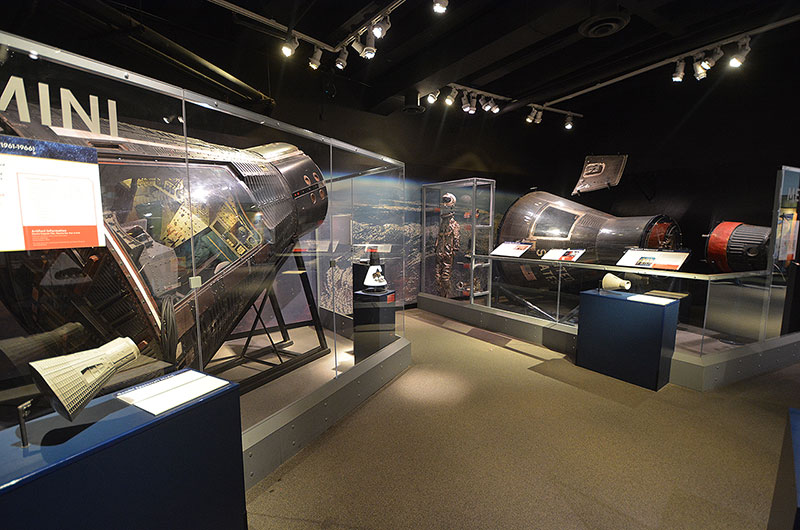
"We are pleased, with the Smithsonian's help, to now have all three — Mercury, Gemini and Apollo — capsules now on display here in one facility." — Christian Greer, chief officer for science, education and experience at the Saint Louis Science Center (collectSPACE) |
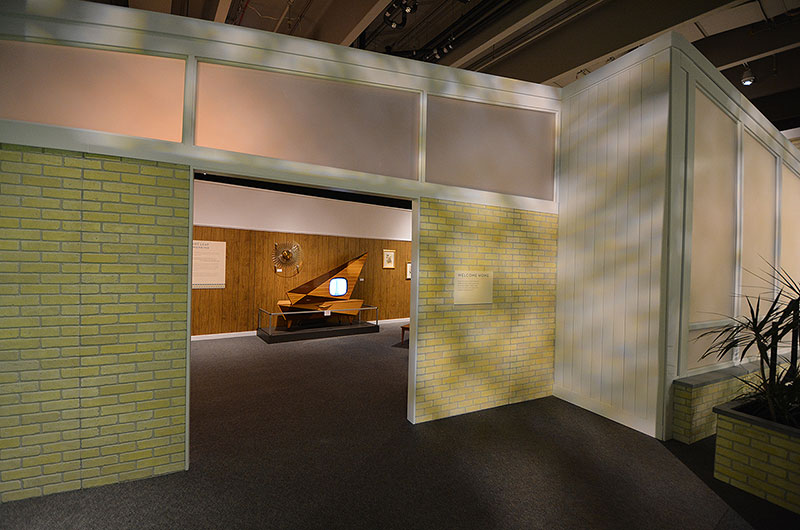
"Welcome Home" — the entrance to "Destination Moon" at the Saint Louis Science Center is a replica of a 1960s home. (collectSPACE) |
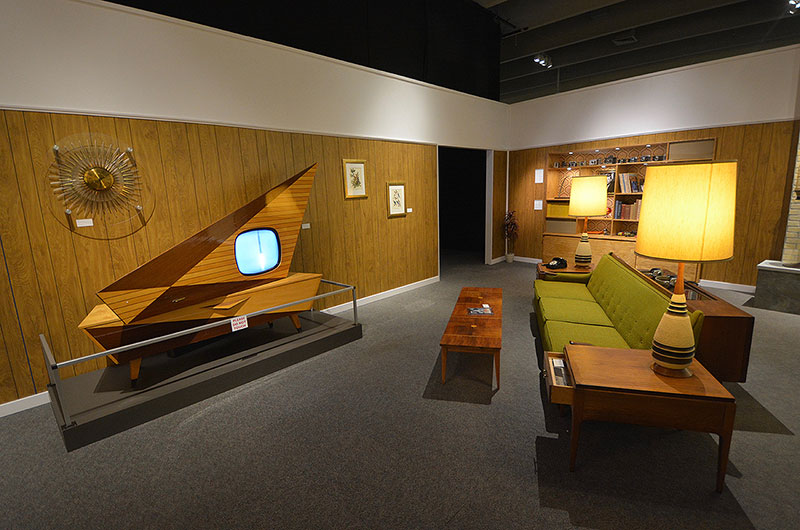
Guests are invited to join the launch and moon landing party in this replica of a 1960s living room, complete with period-correct television set, furniture, music and food. (collectSPACE) |
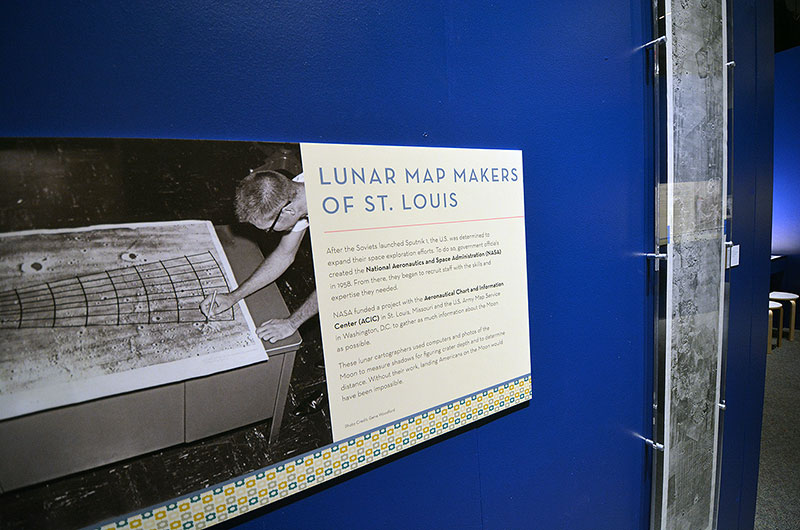
"We also have artifacts from the Aeronautical Chart Information Center, which is based here in St. Louis, featured in the exhibition. In fact, we have several former employees of the Aeronautical Chart Information Center as volunteers here at the Science Center." — Christian Greer, chief officer for science, education and experience at the Saint Louis Science Center (collectSPACE) |
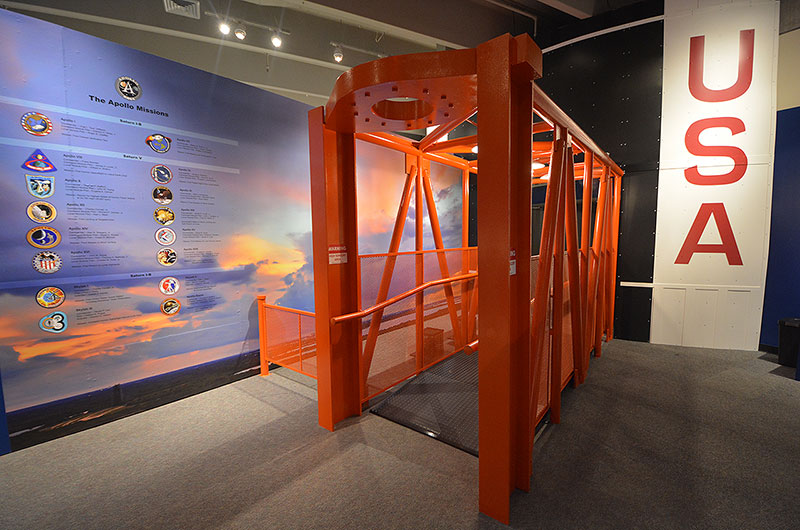
Guests walk across a gantry and experience the rumble and sounds of a launch before seeing the Apollo 11 artifacts. (collectSPACE) |

The crew access hatch from Columbia is displayed separately from the Apollo 11 command module. (collectSPACE) |
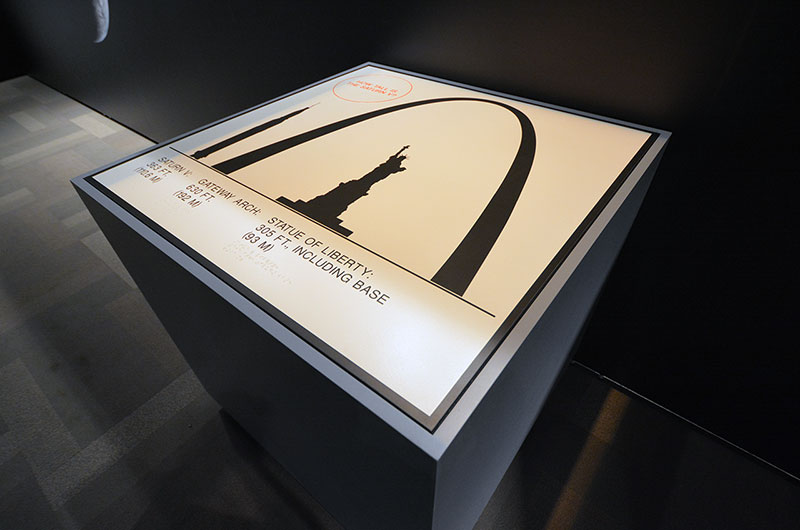
Visuals, including this size comparison for the Saturn V rocket, have been customized for Saint Louis Science Center visitors. (collectSPACE) |
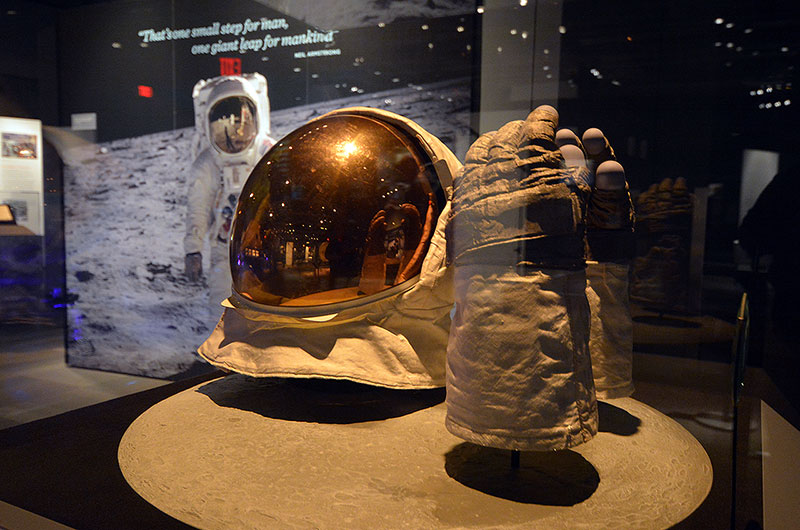
Astronaut Buzz Aldrin's spacesuit gloves and helmet visor assembly are exhibited in front of a photo of them on the moon. (collectSPACE) |
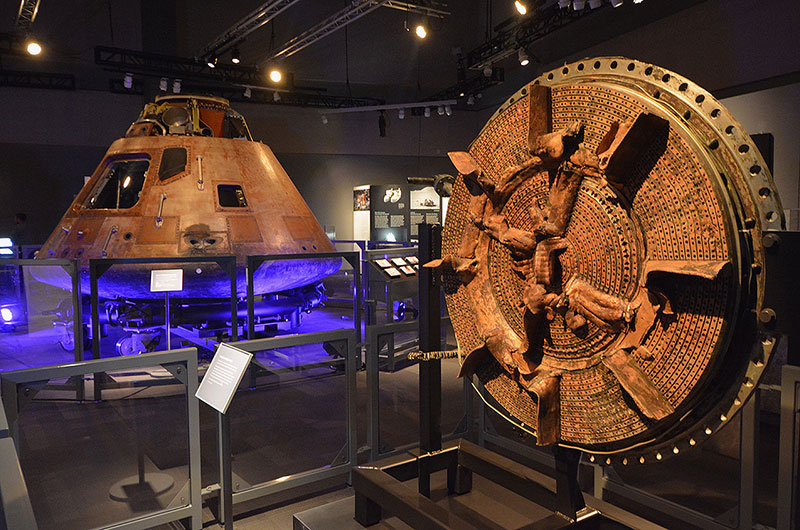
An injector plate from a Saturn V rocket F-1 engine used to launch Columbia and recovered from the ocean floor in 2013. (collectSPACE) |
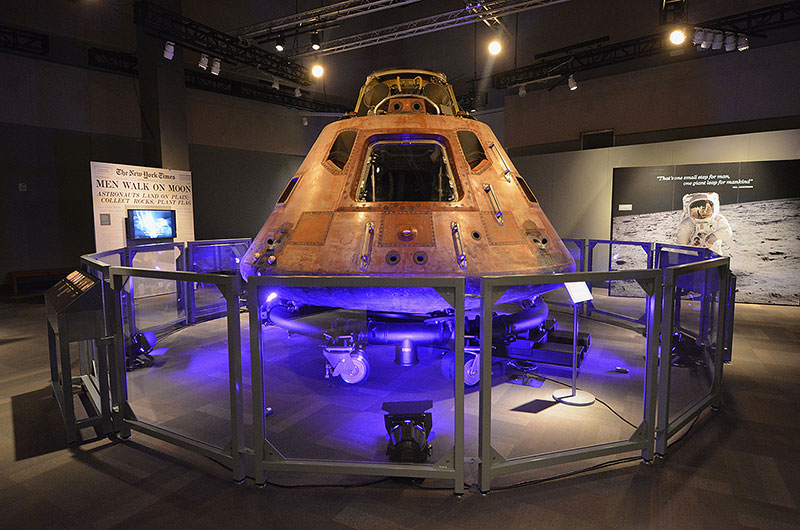
"Of course, the jewel of this exhibition is the command module Columbia." — Bert Vescolani, president and CEO of the Saint Louis Science Center (collectSPACE) |
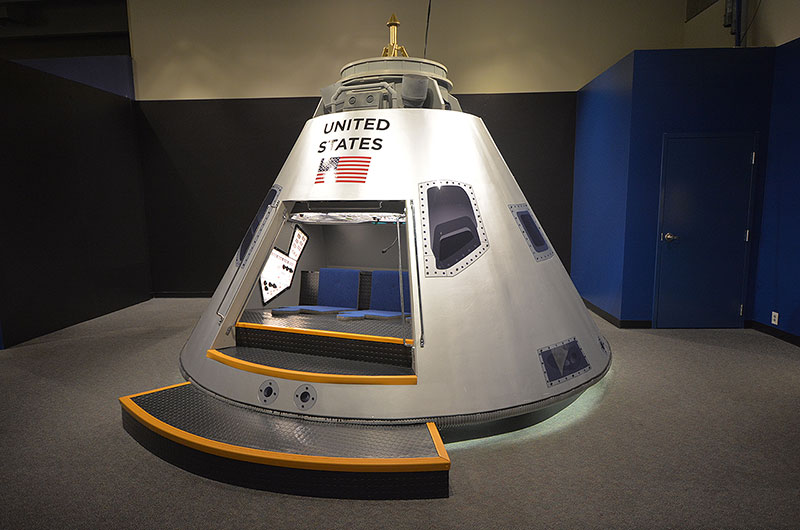
The Science Center created a full-size mockup of the Apollo command module for guests to climb into and sit inside. (collectSPACE) |
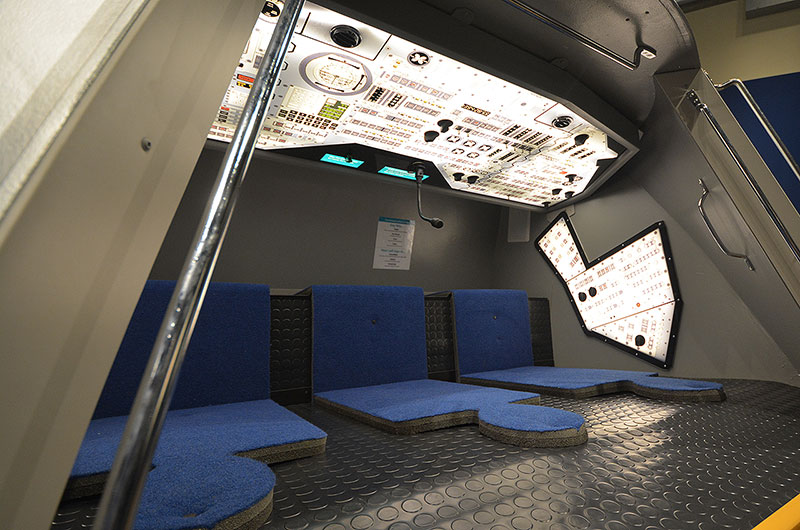
Inside the mockup command module, guests can feel the rumble of launch and talk with others seated in Mission Control. (collectSPACE) |
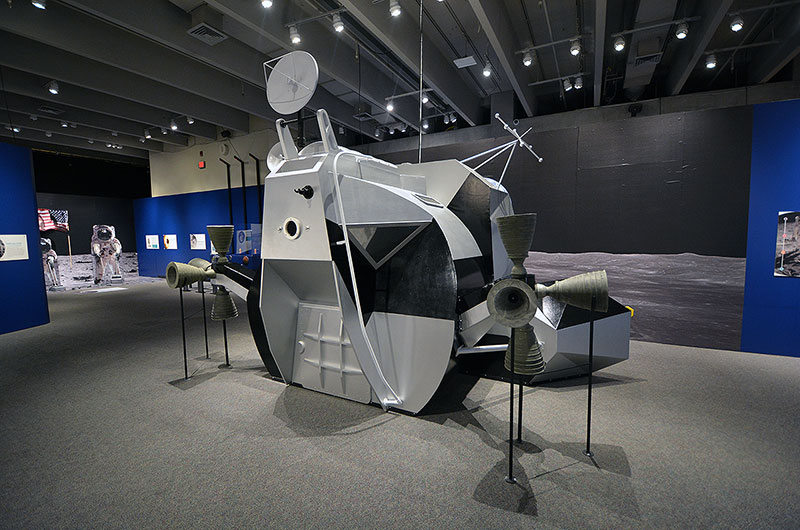
Like the command module, visitors can step inside a mockup of an Apollo lunar module's ascent stage, the lander's cabin. (collectSPACE) |
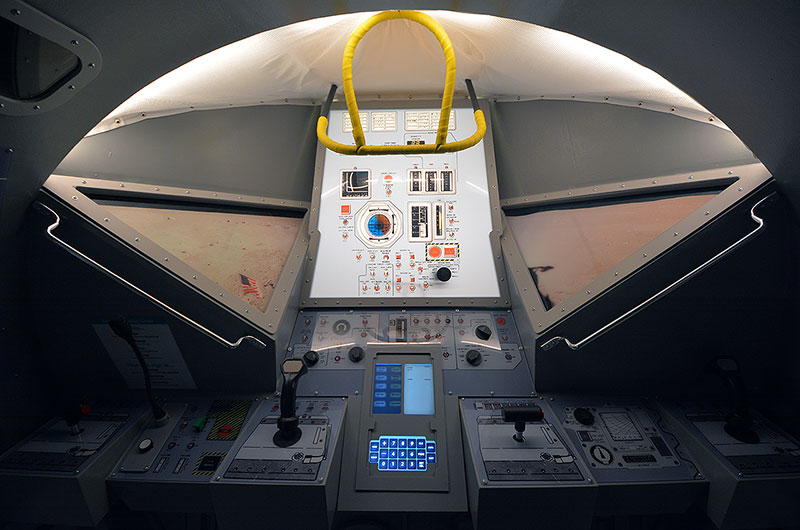
Guests can enter "Verbs" and "Nouns" — flight program commands — on the replica controls of the Apollo lunar module. (collectSPACE) |
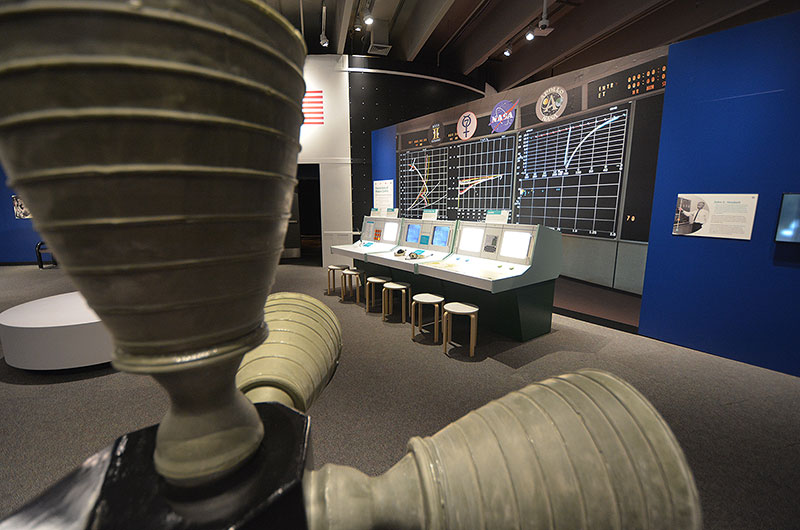
A row of replica Mission Control consoles invite visitors to try their hand directing a (simulated) Apollo moon landing. (collectSPACE) |
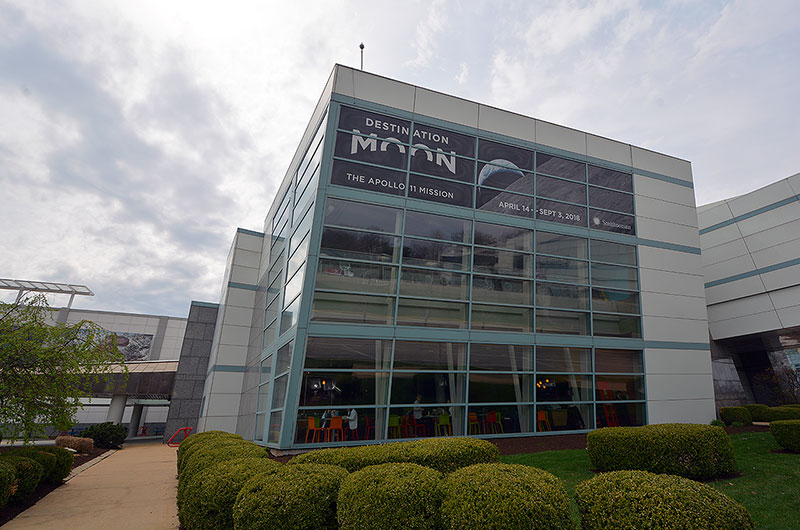
The Saint Louis Science Center is the second tour stop for the "Destination Moon: The Apollo 11 Mission" traveling exhibition. (collectSPACE) |
|

© 1999-2025 collectSPACE. All rights reserved.
|
|

|

|
